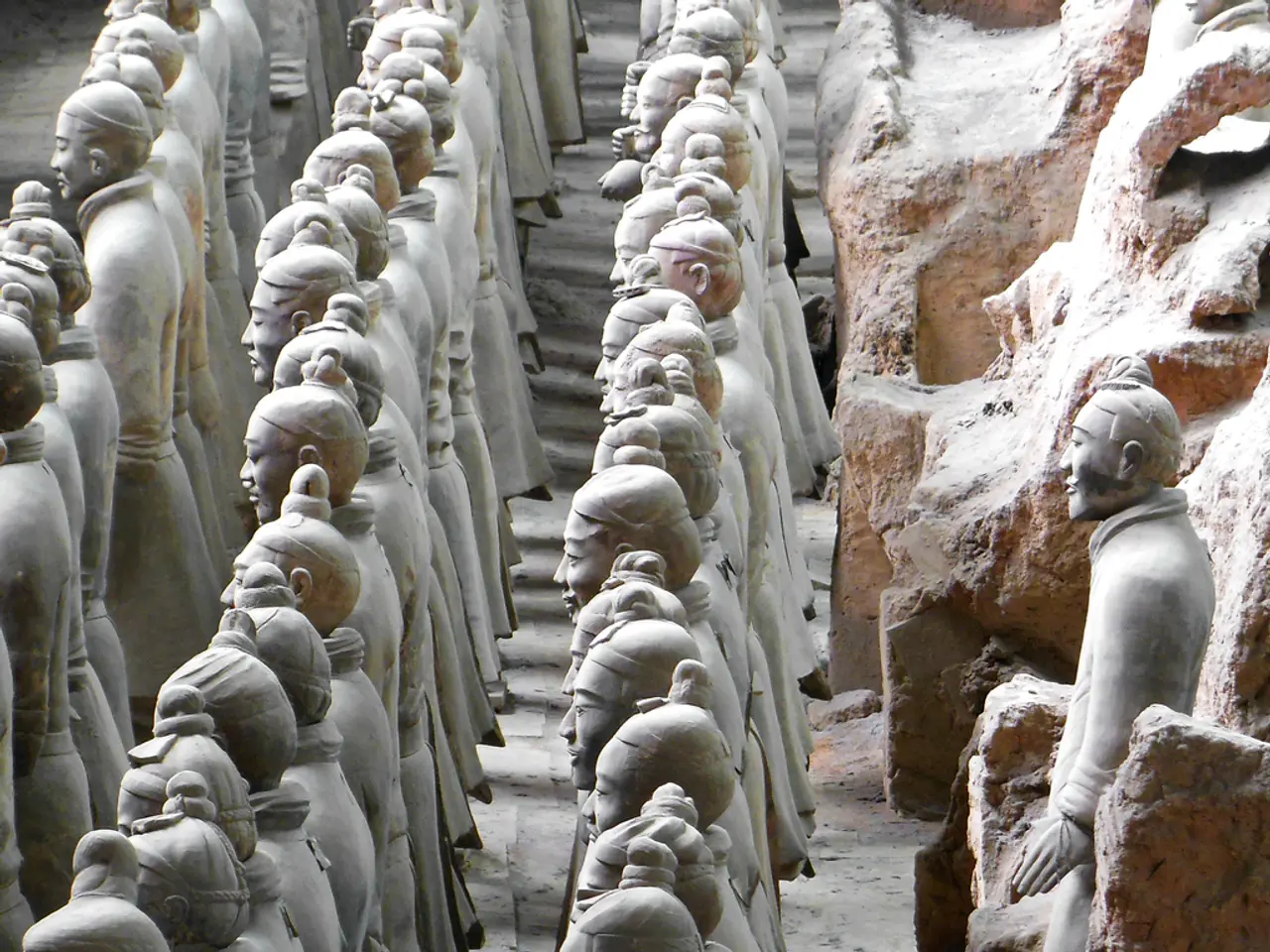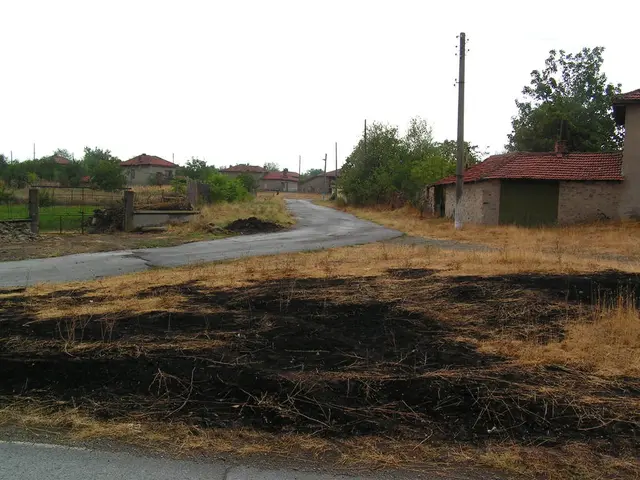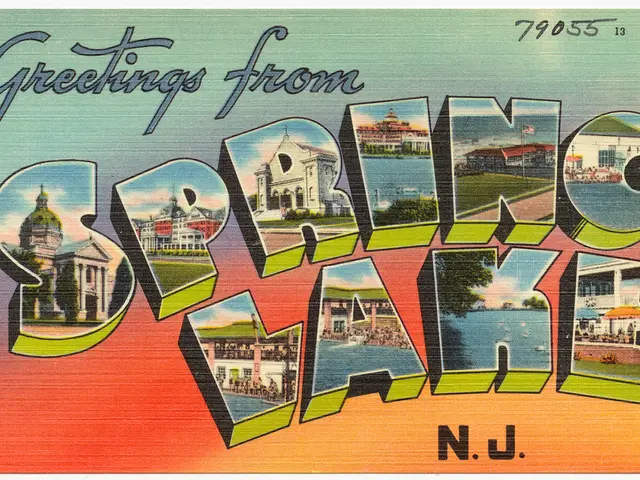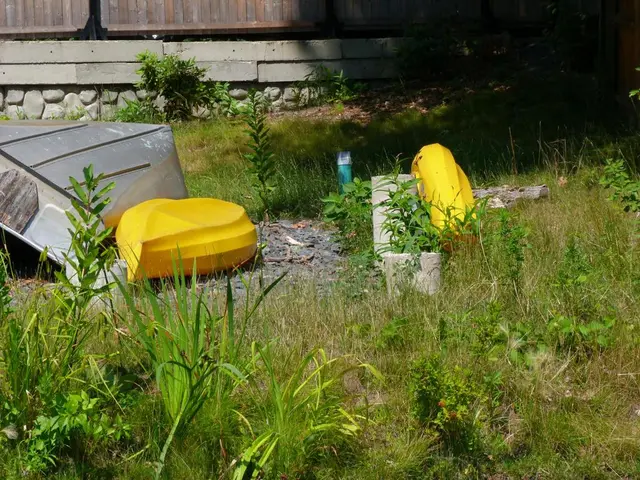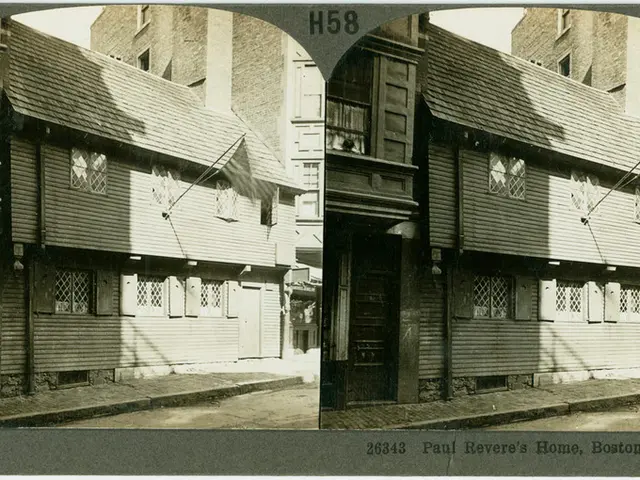Regulation of mining operations by LEAG contract for monuments preservation
In the eastern German state of Brandenburg, a unique balance is being struck between preserving cultural heritage monuments and maintaining ongoing industrial operations. This delicate dance is most evident in the case of the Jänschwalde power plant and the Schwarze Pumpe briquette factory.
Context
The Jänschwalde power plant, a large lignite-fired power station, stands near several important industrial heritage sites, including the Schwarze Pumpe briquette factory, a historical industrial monument. Both sites represent significant cultural and technological history from East Germany's lignite mining and energy sector. The challenge lies in preserving these historic industrial monuments while allowing continued operation or modernization of active industrial facilities.
Specific Agreements and Guidelines
To address this challenge, a series of agreements and guidelines have been established:
- Heritage Assessment and Documentation: Before engaging in any development or operational changes, comprehensive surveys and documentation of the industrial monument's historical, architectural, and technological significance are carried out. This step establishes what elements must be preserved and serves as a baseline for monitoring future impacts.
- Buffer Zones and Demarcation: Clearly defined boundaries separate the protected monument area from the industrial site operations to prevent accidental damage. Buffer zones may restrict industrial activities like construction, heavy transport, or emissions near the monument to safeguard its structural integrity and environment.
- Joint Oversight by Environmental and Heritage Authorities: Collaboration among local heritage protection agencies, environmental regulators, and the industrial operator ensures agreements to consult with heritage experts before implementing operational changes affecting the monument.
- Adaptive Reuse and Integration: Efforts are made to maintain the monument’s original character while enabling compatible industrial use or visitor access. For example, parts of the briquette factory may be preserved as a museum or educational site, supported by the industrial operator.
- Monitoring and Impact Mitigation: Regular inspections detect any impact of industrial activities (vibrations, dust, emissions) on the monument, and mitigation measures are implemented, such as dust control, noise reduction, or structural reinforcements.
- Public Engagement and Funding: Local communities and stakeholders are involved in decision-making to foster shared responsibility for both heritage and industrial development. Joint funding or subsidies for monument conservation are secured, often from industrial companies or governmental heritage programs.
- Legal and Planning Instruments: Monument protection requirements are incorporated into spatial planning and industrial permitting, and binding agreements ensure that any future industrial expansion respects heritage conservation constraints.
Example Outcomes at Jänschwalde and Schwarze Pumpe
- The Schwarze Pumpe briquette factory, though no longer operational, is preserved as a technical monument with guided tours, supported in part by the industrial stakeholders.
- The Jänschwalde power plant operates with specific constraints near the monument, including environmental controls to limit dust and vibrations.
- The local authorities maintain close oversight and coordinate heritage conservation with energy production needs, exemplifying a model of balancing industrial viability and cultural preservation.
In conclusion, the Jänschwalde-Schwarze Pumpe case demonstrates a negotiated approach incorporating thorough documentation, legal protection, operational controls, and stakeholder cooperation to balance monument protection with industrial activity in Brandenburg. The upcoming contract between LEAG, the Brandenburg State Office for Heritage Preservation, the Archaeological State Museum, and the Spree-Neiße district aims to further ensure the continued operation of the Jänschwalde power plant and the briquette factory in Schwarze Pumpe while maintaining their status as monuments.
